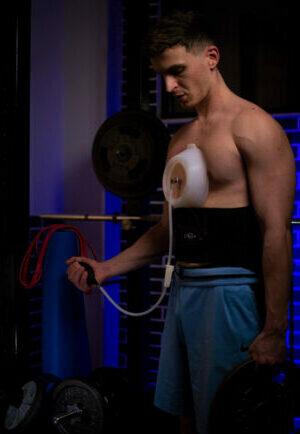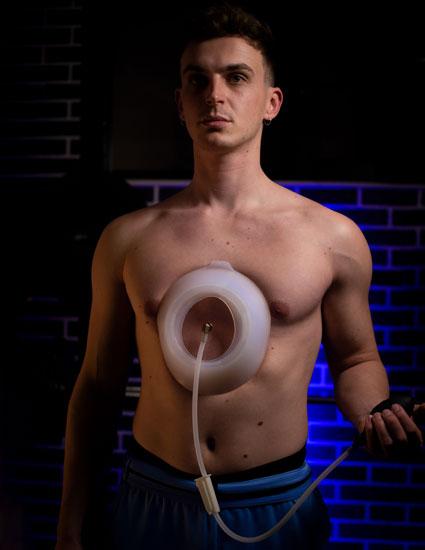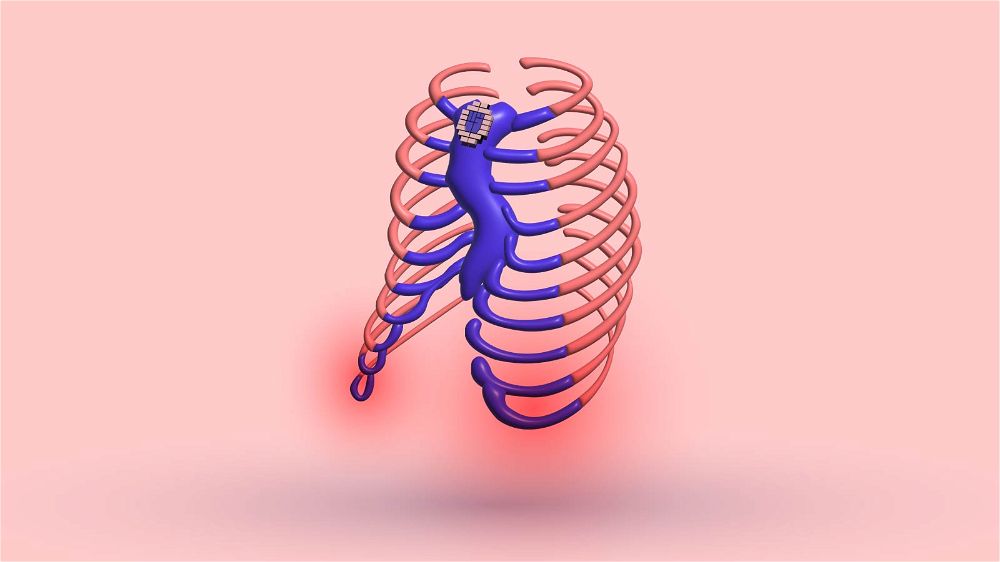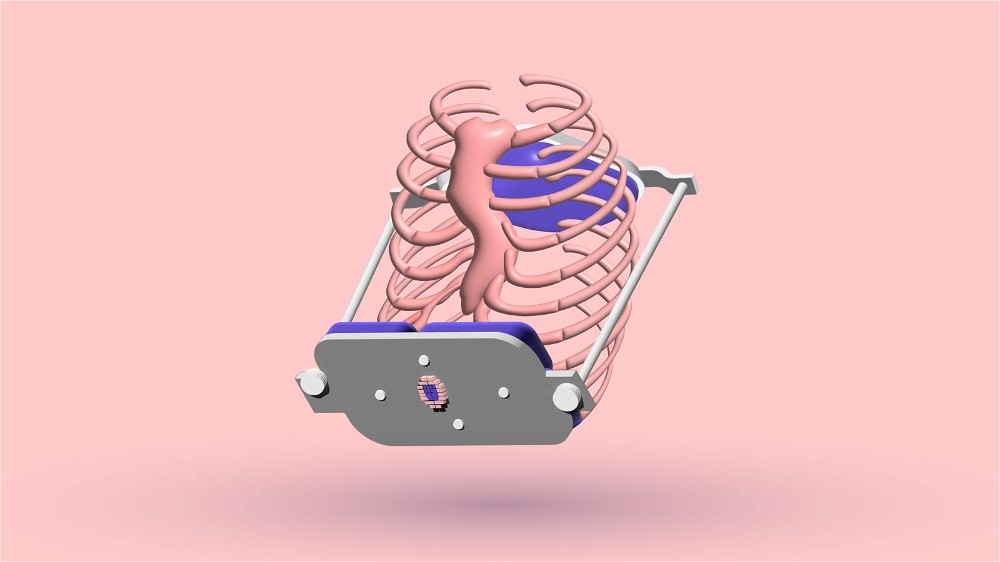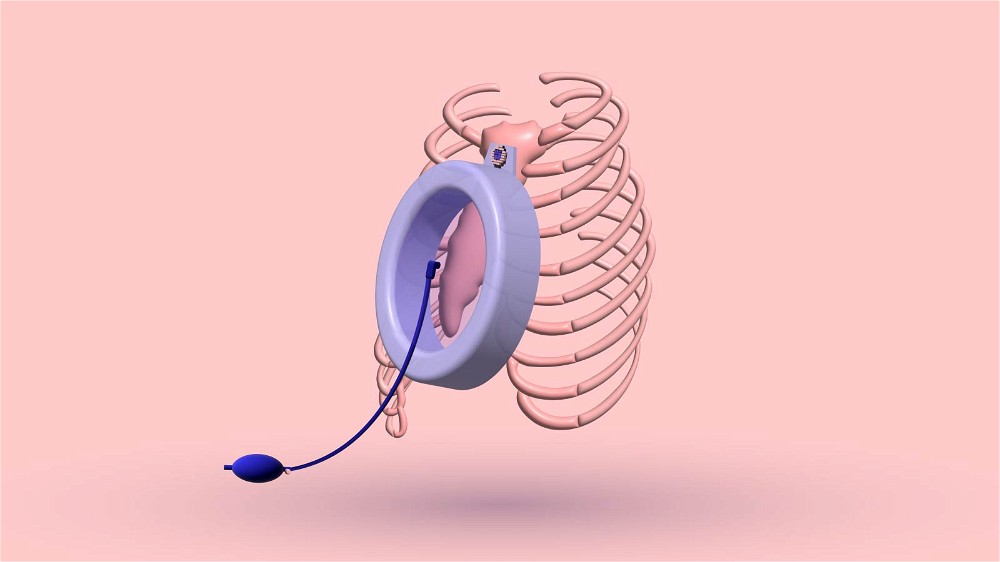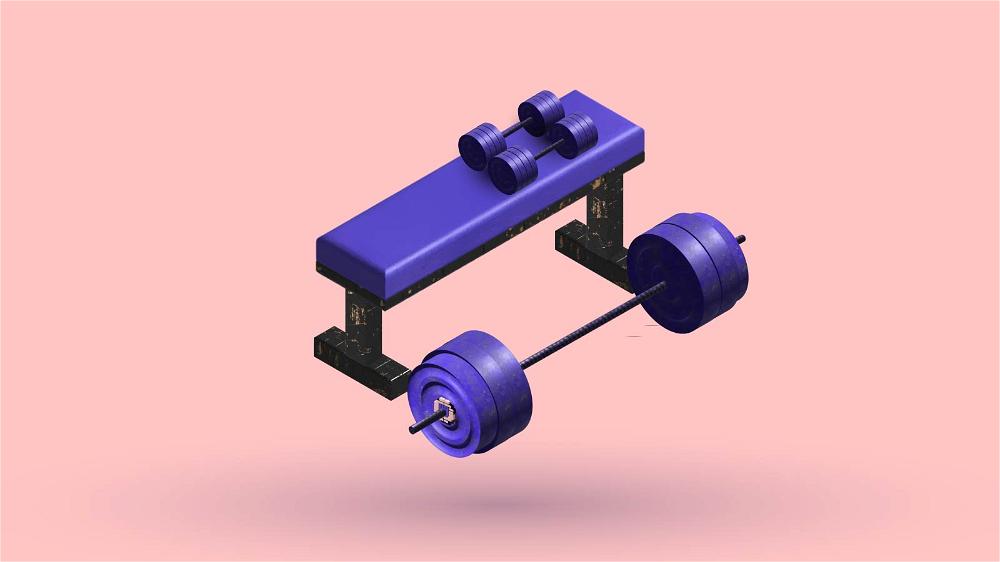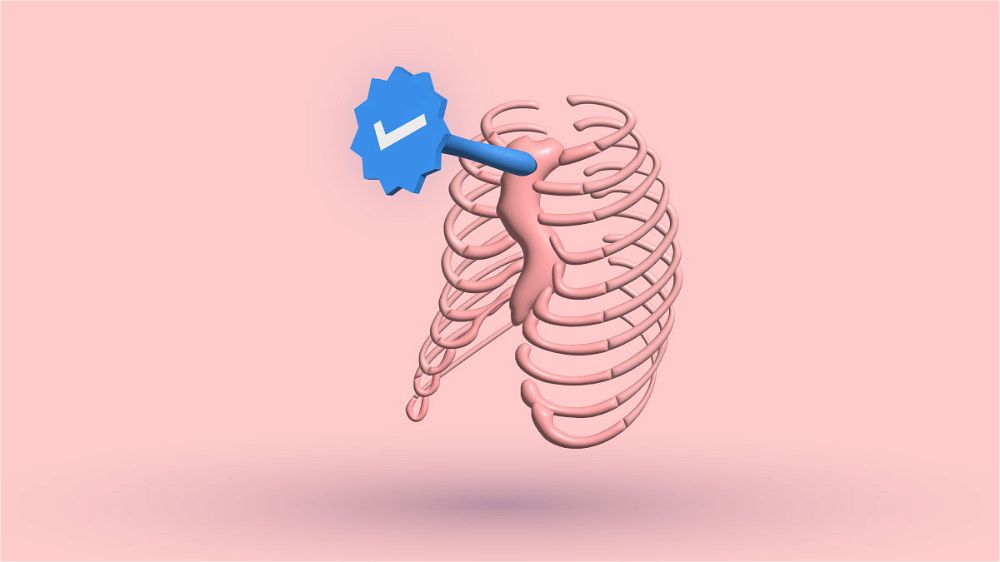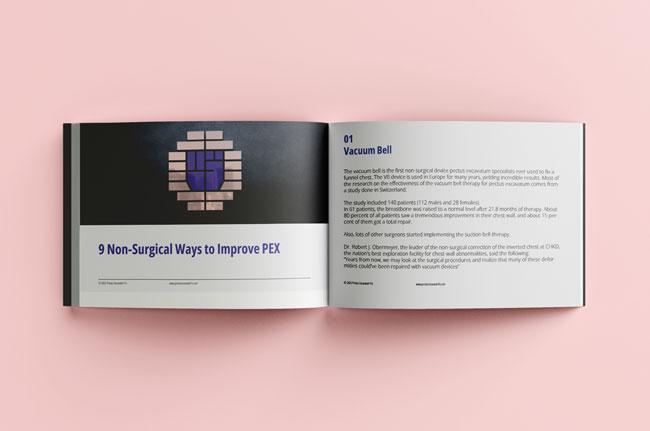The Anatomik Modeling surgery is a treatment for pectus excavatum that uses customized implants for each patient. People rarely talk about implant techniques to correct pectus excavatum cosmetically.
Only If the Deformity is Cosmetic
The Anatomic Remodeling surgery is more of a niche surgery. It isn't a solution for everybody as the implants will fill up the indentation only. They will not correct the bone and cartilage abnormality.
As you may already know, the pectus excavatum deformity is not only cosmetic depending on the severity. The indentation can negatively affect the heart and lungs functioning. Exercising capacity is limited, and the heart is often pushed to the side.
When Anatomik Remodeling Is Not Recommended
If the deformity causes you physical problems, not just cosmetic, the Anatomic modeling implant surgery isn't recommended. There is a reason why this type of surgery isn't widespread.
It can only help people with minor cases of deformity who want to improve their chest wall appearance cosmetically.
However, it can help these patients psychologically a lot. They can feel comfortable in their skin, especially when they need to take their shirts off in public.
Surgery Step by Step
- First, a CT scan is done on the patient's body.
- 3D model of the patient body is created.
- A unique 3D virtual implant is designed to fit in the chest cavity.
- The implant is made of silicone rubber that is meant to stay in the patient's chest permanently.
- The implant is placed in the chest cavity during a one-hour surgery. It is placed deep under the chest muscles.
- There is no need for a second surgery like the case with the Nuss procedure, where the bar is removed with a second procedure.
Hospital Time
The recovery from the Anatomik Modeling surgery can be fast if no fluid buildup or infections happen. You need to spend about 72 hours in the hospital. Some people said they were even released 48 hours after the surgery.
The pain in the chest is minimal if there is no fluid buildup or infection compared to more invasive techniques like the Nuss procedure, Ravitch procedure, or Pectus Up procedure.
Compressive Vest for Recovery
You will need to wear a compressive vest for a month after surgery. The vest can be pretty uncomfortable to wear as it will compress your chest, but it shouldn't worry you too much because it is only a month.
What Anatomik Remodeling Surgeons Have to Say About the Procedure
Dr. Marcel Dahan
According to Marcel Dahan, Ph.D. of the Thoracic Surgery department in the Toulouse University Hospital in France, the surgery is immediate and striking. The 3D custom-made implants offer simplicity, safety, and reversibility.
Dr. Pierre Quinodoz
According to Pierre Quinodoz, a Medical doctor at the De Latour Hospital in Geneva, the Anatomik Modeling surgery is reliable and minimally invasive. He says there are no risks of any complications. The patients are delighted with the outcome.
Dr. Franck Duteille
According to Franck Duteille, a Ph.D. who works at the Nantes University Hospital, Anatomik Modeling surgery has revolutionized the treatment of pectus excavatum and has significantly simplified it.
Dr. Julien Pauchot
According to Julien Pauchot, Ph.D., working at Besancon University Hospital, the custom-made implant technology is very comfortable for patients with a non-aggressive and pain-free surgery. He says it should be the first line of treatment.
Complications
According to Anatomik Modeling, there are complications in less than 1% of the patients that underwent this surgery. This is significantly lower than the Nuss procedure.
However, it is essential to know that patients undergoing the Nuss procedure generally have more severe deformity cases.
On the other hand, if you have complications with the implant, the removal is more straightforward than removing Pectus bars underneath your sternum.
What I Dislike About It
In my personal opinion, I don't think this surgery is suitable for those people who are physically active and like to build their muscles in the weight room, especially if the implant is inserted above the chest muscles.
The implant will stay the same size underneath your pectoral muscles when you work out and build muscle.
As the chest muscles grow, you will probably have an unnatural and awkward physical appearance. Please don't forget that the cartilage is still deformed, and the muscles will grow abnormally.
This will eventually make the implant more obvious. In my opinion, I would never do this surgery as it doesn't fix the root problem of pectus excavatum. In my honest opinion, I look at it as more of a bandage solution.
Concerning Facebook Posts and Comments
Chest Fluid Buildup
In the Pectus Excavatum Surgeries Facebook group, I saw a post by Ben Bowditch, who was very anxious post-Anatomik Modeling implant surgery. He noticed a lot of fluid when the nurse changed his dressing. He was calmed down as was said it was normal.
However, as Anatomic Modeling claims, his main concern was that the custom implant was placed over his chest muscles and not under them. The surgeon recommended the implant be inserted above the chest muscles because he was concerned about "muscle animation ."
The pectoral muscles fuse when healing and cause a pulling sensation on the opposite muscle you contract. He claimed the outcome would be great, and the chest will look natural.
Then, Ben says that his chest didn't look natural at all. He could see and even feel the ridge at the bottom of the silicone implant towards the ab muscles. He also said he has a good muscle tone and goes to the gym.
Horrible Experience with Anatomic Modeling
On the Facebook group Pectus Excavatum Surgeries, I stumbled upon a post about a patient's Anatomik Remodeling surgery experience. The patient was delighted by the result.
However, there was a comment written by Preben Petersen, saying that he had a horrible experience with the implant surgery. He had a lot of pain, and nobody said what was wrong with it, so his implant had to be removed.
He regretted doing the surgery and recommended everybody stay from this surgery.
Also, I found another comment by Mr. Preben, saying that the doctor in question ignored his complaining about pain for the first 6 to 8 months. After that, he couldn't get the implant removed because of the Covid-19 pandemic.
He also mentions that you could even feel the implant in your chest. Preben didn't know that Anatomic Modeling was a risky procedure when he started. He even goes to the point where he says that this surgery is ruining his life completely.
Here's, he wrote another comment about Anatomik Modeling surgery.
Infection Risks
One of the worst things that can happen if you have an implant in your sunken chest is for that implant to get infected.
If the implant gets infected, this can be very problematic. One of the worse things than getting an infection is getting cancer. A rare type of cancer called Anaplastic Large-Cell Lymphoma (ALCL) occurs around textured implants.
One of the first signs is a fluid collection later years after the surgery that keeps coming back.
What If Implant Removal Is Necessary?
First, the implant is removed, the fluid is cleaned, and the capsule is taken away. There is mostly some infection around the implant.
The risk you have with an implant like this is that it can infect your breastbone or bone. Osteomyelitis is a bone infection of your sternum and your ribs. This can be very, very dangerous.
The first step is to get the fluid out before anything. Send the fluid to get it analyzed to ensure there isn't cancer on any infection there. Then, the implant is taken out, and the scar tissue is removed from the capsule around, allowing the area to heal and get back to normal.
After that is completely healed and any side infections are gone, you want to do any reconstruction.
Scar Tissue Around Implant
The capsule or scar tissue around this implant is very similar to what you would see around a breast implant, and it has varying degrees of thickness. It can be super thin or progress to the opposite, where it can get so thick it can be calcified like an eggshell.
In these situations, you can take the implant out and take the rest of that capsule. You can even squeeze it with your hand, and it can crack and break, just like if you're pressing the shell of an egg.
Dr. Anthony Youn's Reaction
Here's a video of America's Holistic Plastic Surgeon, Dr. Anthony Youn, reacting to a video where a patient who had an implant to fill his pectus excavatum experiences fluid buildup.
He goes to the point where he drains the fluid from his chest on his own. See how much of a disaster this implant is.
10 Sources
- Anaplastic Large Cell Lymphoma [Internet]. Lymphoma Research Foundation. [cited 2022 Dec 4]. Available from: https://lymphoma.org/understanding-lymphoma/aboutlymphoma/nhl/anaplastic-large-cell-lymphoma/
- Anthony Youn - Wikipedia [Internet]. [cited 2022 Dec 4]. Available from: https://en.wikipedia.org/wiki/Anthony_Youn
- Chirurgie Esthétique et Reconstructrice Médecine Esthétique [Internet]. [cited 2022 Dec 4]. Available from: https://www.julien-pauchot.com/
- Marcel Dahan,PhD, interview - Toulouse | AnatomikModeling [Internet]. [cited 2022 Dec 4]. Available from: https://www.anatomikmodeling.com/en/news/marcel-dahanphd-interview-toulouse
- Osteomyelitis [Internet]. 2021 [cited 2022 Dec 4]. Available from: https://www.hopkinsmedicine.org/health/conditions-and-diseases/osteomyelitis
- Pectus Excavatum Surgeries | Facebook [Internet]. [cited 2022 Dec 4]. Available from: https://www.facebook.com/groups/1210391819010011/about/
- Pectus excavatum: Not just a cosmetic concern - Mayo Clinic [Internet]. [cited 2022 Dec 4]. Available from: https://www.mayoclinic.org/medical-professionals/cardiovascular-diseases/news/pectus-excavatum-not-just-a-cosmetic-concern/mac-20430716
- Pierre Quinodoz, MD, interview, Geneva | AnatomikModeling [Internet]. [cited 2022 Dec 4]. Available from: https://www.anatomikmodeling.com/en/news/pierre-quinodoz-md-interview-geneva
- Pr Franck Duteille | AnatomikModeling [Internet]. [cited 2022 Dec 4]. Available from: https://www.anatomikmodeling.com/en/find-a-surgeon/pr-franck-duteille
- Surgical risks | AnatomikModeling [Internet]. [cited 2022 Dec 4]. Available from: https://www.anatomikmodeling.com/en/surgical-risks


